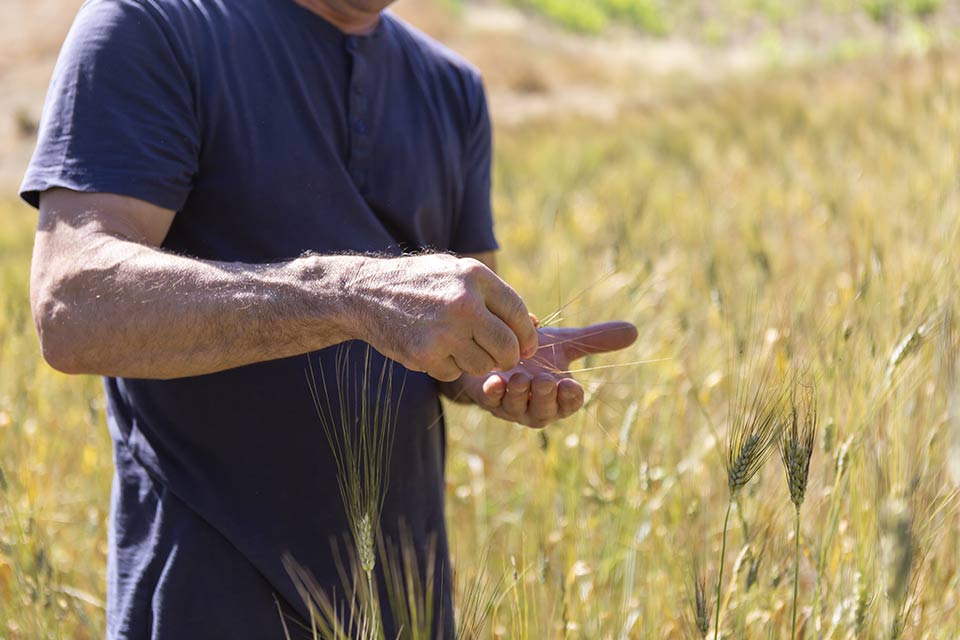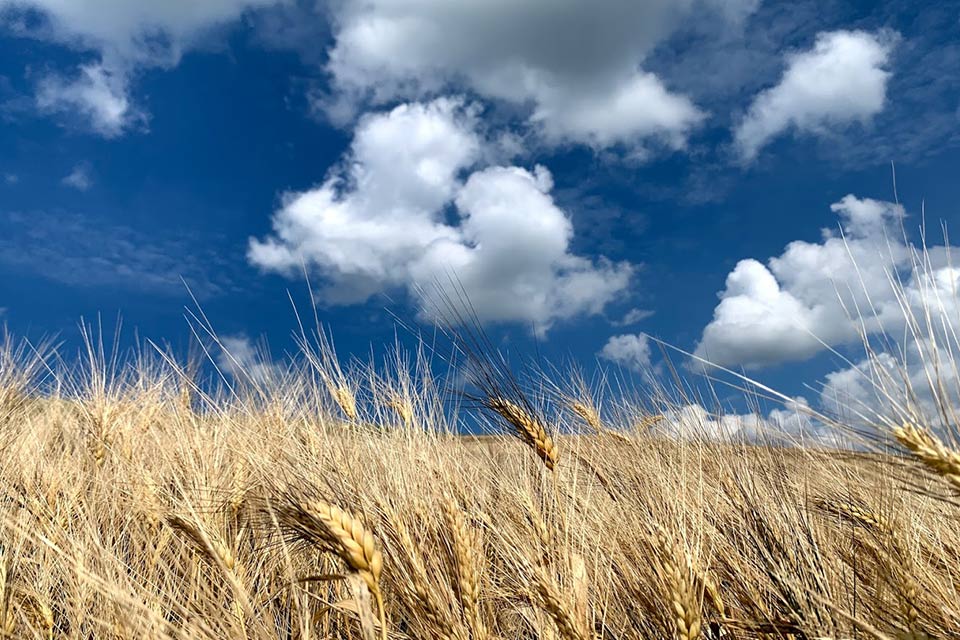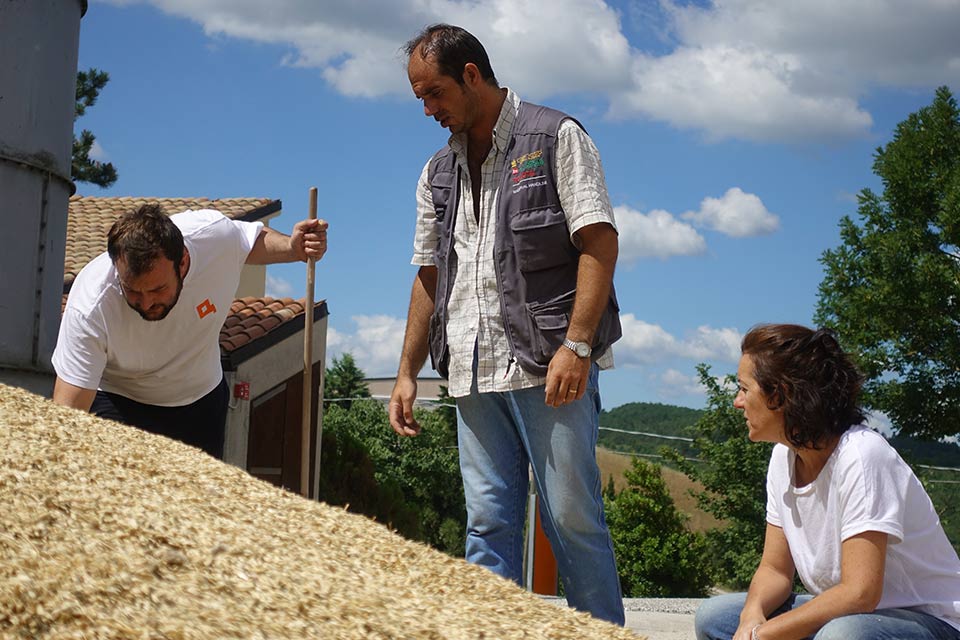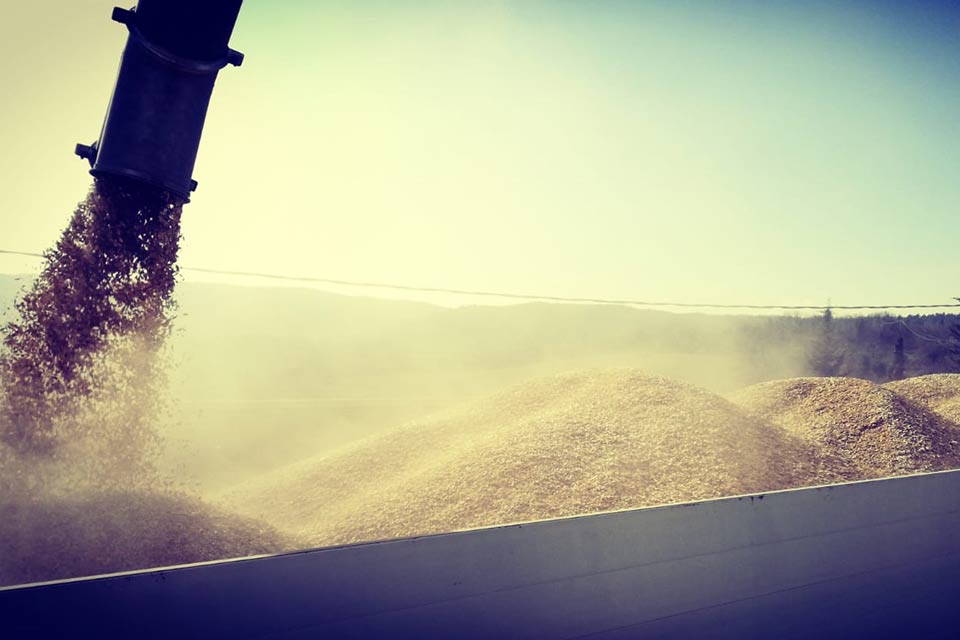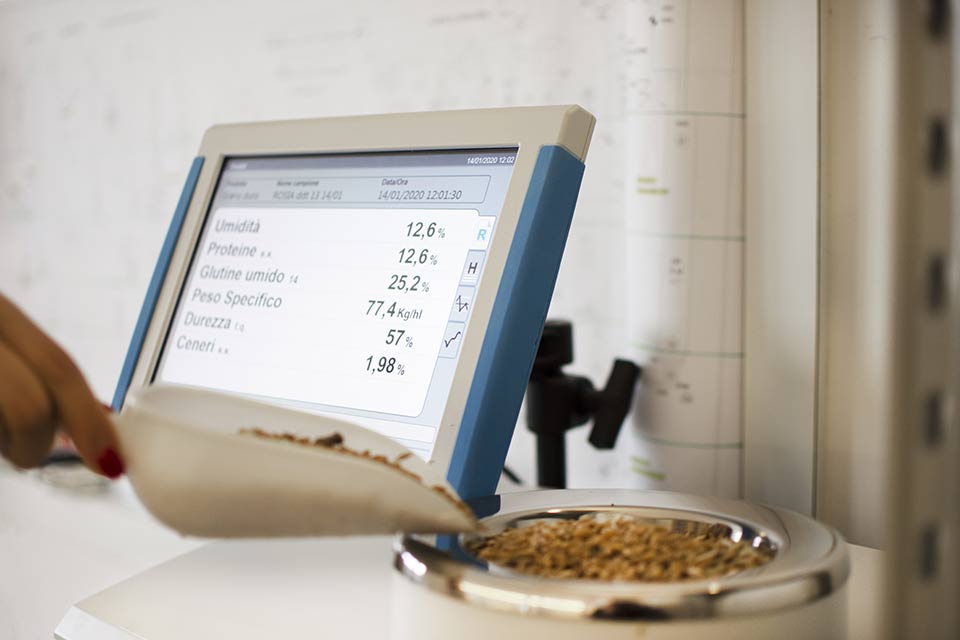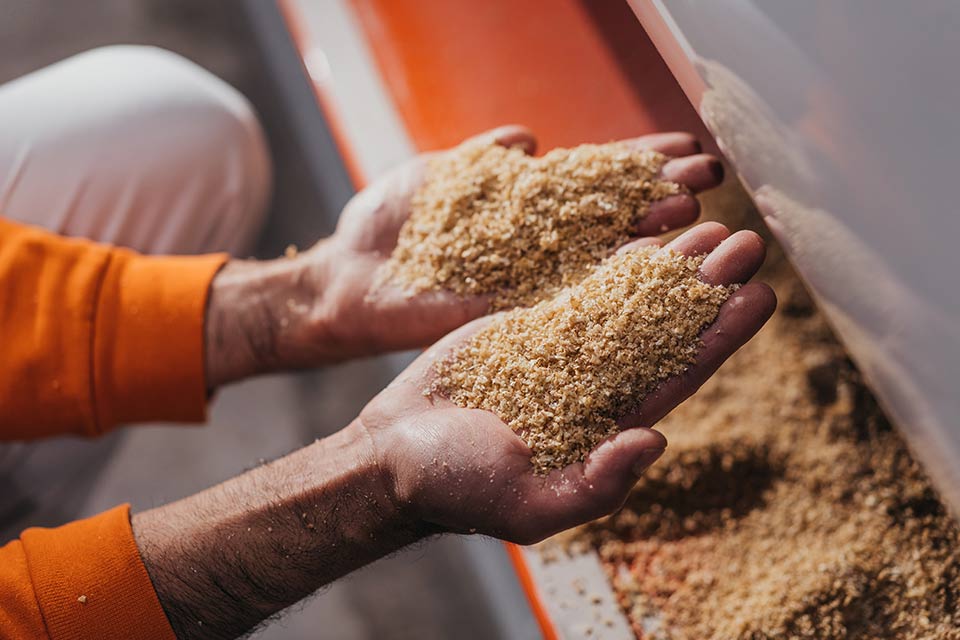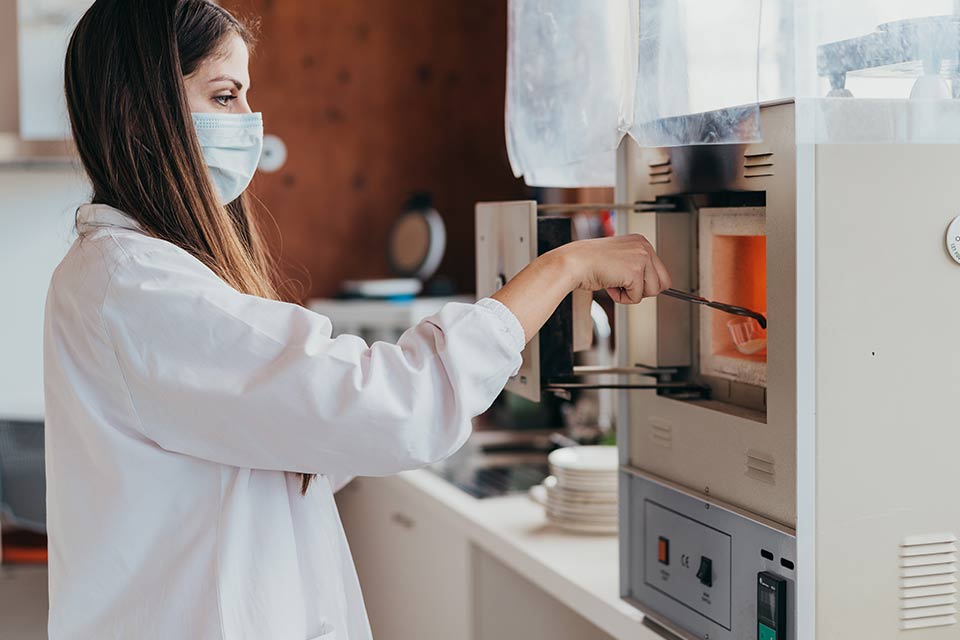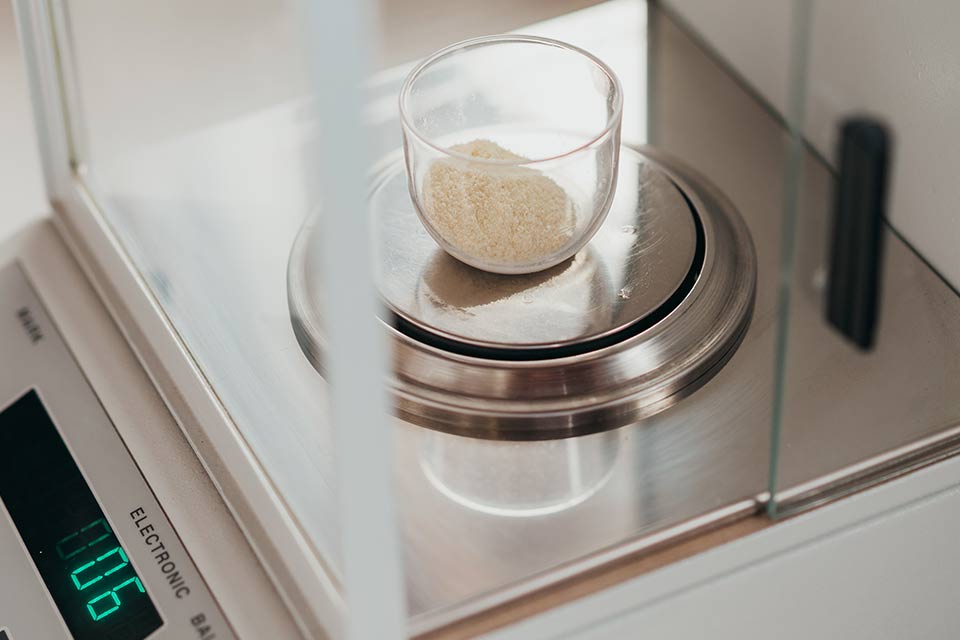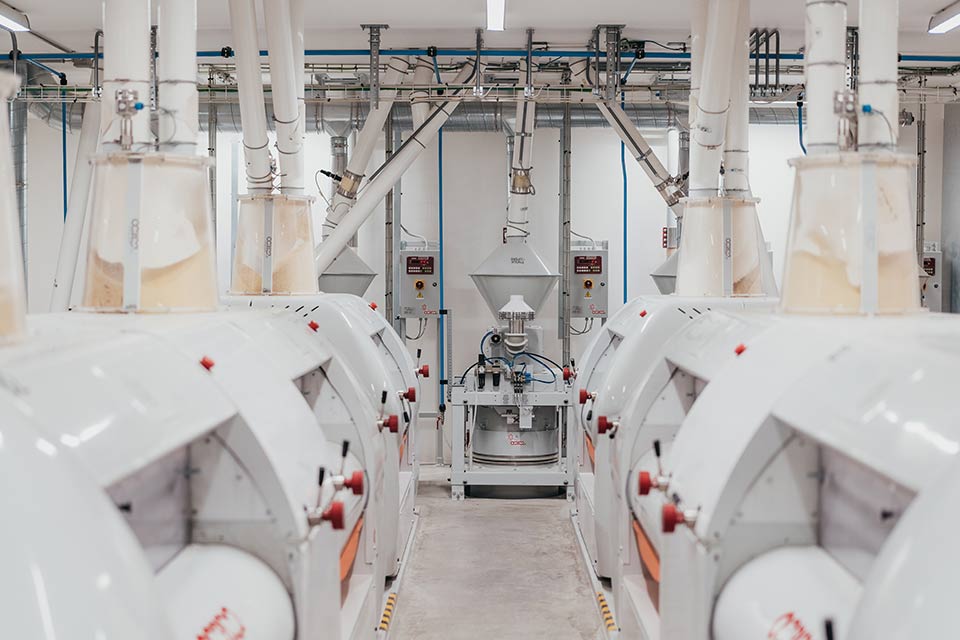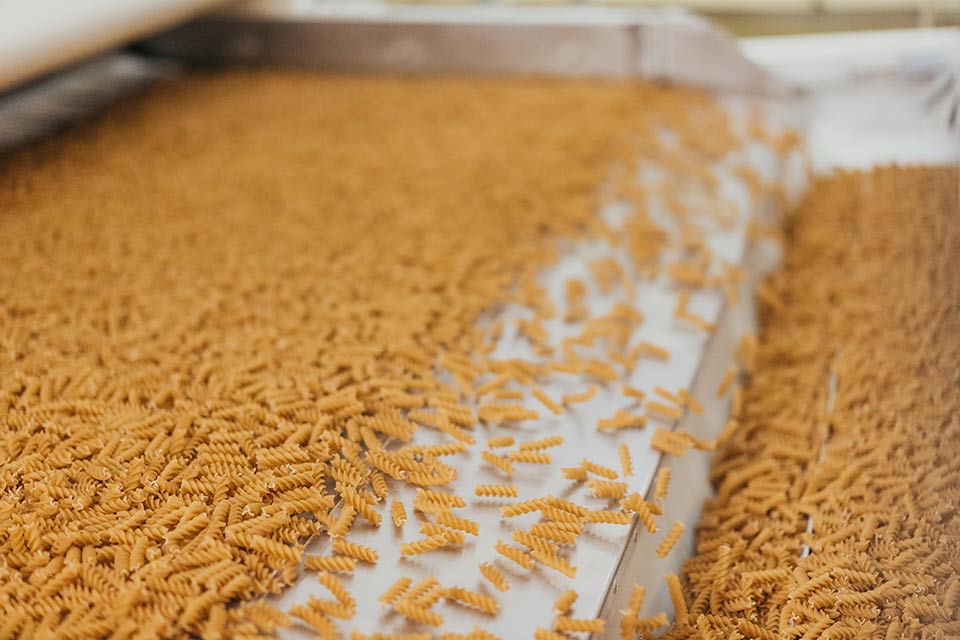How Girolomoni organic pasta is made
We built our organic production method step by step, from the time that Gino and Tullia moved to Montebello, into the Ecosystem you see today. A lengthy process that has taken years, but which has given life to the controlled short supply line for Girolomoni pasta that we are so proud of.
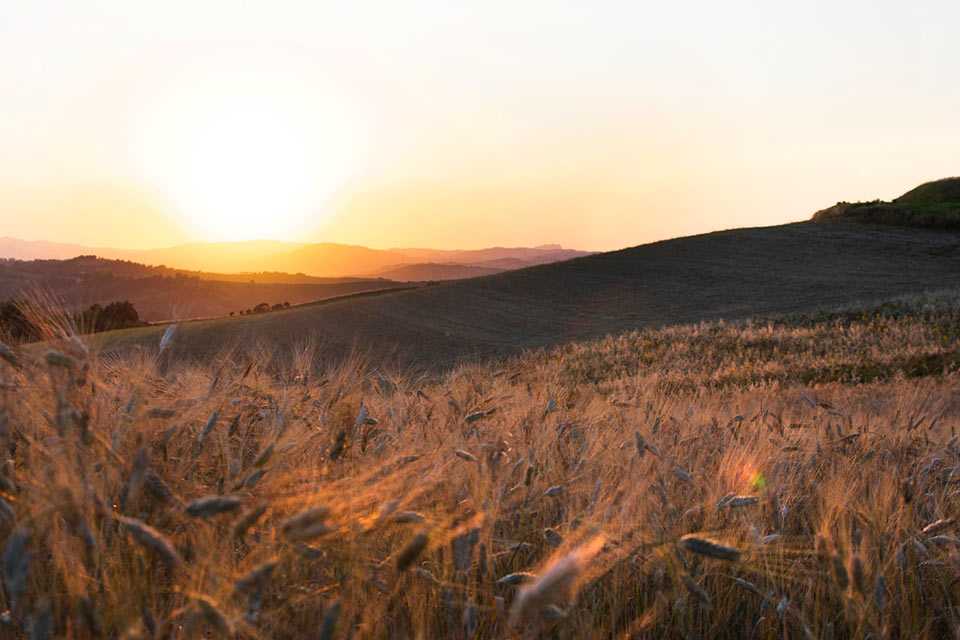
From organic wheat to great Girolomoni pasta
Our pasta completes a journey before it reaches your table. It’s good because we know where and how the wheat is grown, we mill it and we know every part of it. Then we mix it and dry it intelligently and thoroughly, using the technology we have brought in, and guided by the principle of always respecting ingredients and nutritional qualities. It is the result of continued dialogue among farmers, millers and pasta makers for bespoke recipes for our pasta.
1. THE ORIGIN OF THE WHEAT
Quality Control
Over time, every farm is supervised by the same agronomist, a process which creates a relationship of trust. The agronomist advises and checks the correctness of the growing process.
- S/he assesses the yield according to sowing plans;
- S/he evaluates the general state of the fields;
- S/he collects samples of the ripening ears to ensure no plant protection products are present;
- S/he checks the rotation process.
All this to guarantee quality to the consumer and the whole supply chain.
The process
The journey begins with organic wheat from a controlled supply chain. The wheat we use to make the pasta is all from farms that are members or associates, mainly in central Italy and over 70% of which are in the Marche.
2. HARVEST AND STORAGE
Quality Control
All storage centres are checked before harvest and distribution to make sure they are the right quality; subsequently they are monitored throughout the year to monitor correct storage.
The process
When the time is right – between June and late July – our farmers start with threshing, depending on the pedoclimatic conditions of the land. Once the wheat has been harvested, it continues its journey to the nearest storage centre.
3. FROM WHEAT TO PASTA
Quality Control
Before we grind the wheat, it is thoroughly tested:
- At external laboratories with SINAL accreditation to make sure there are no pesticides or plant protection products, or heavy metals, all of which requires highly specialised instruments
- In house to check proteins, specific weight, moisture and ash content, impurities and microtoxins. Checking the proteins allows us to create mixes that will calibrate the harvests and create a pasta that remains good over time
The process
The wheat for our organic pasts arrives at the Mill, ready to be ground into semolina.
We built our mill in 2019, alongside our pasta factory on the Montebello hill, the crowning point of Gino’s dream. A dream we achieved, that of seeing the pasta supply line brought to completion, with direct management of every stage in the production process.
Ours is a small roller mill, but it uses state-of-the-art technology which:
- Offers precision in the formulation of recipes for bespoke flour
- Does not cause thermal shock during processing
- Cuts waste to a minimum
Quality Control
As soon as the mill has finished the grinding process and before using the semolina in the pasta factory, the laboratory carries out an in-house check of moisture, ash, protein, gluten, colour index and grain size.
4. GOOD PASTA
Quality Control
Our finished pasta products undergo the following:
- In-house testing of cooking times and thickness
- External microbiological testing
Moisture and temperatures are automatically measured throughout the processing stages, using probes, checked by our pasta makers during the whole process.
Samples are kept back from every batch for the whole shelf life and others, for all product conformity checks.
The process
The semolina is ready for the last stage in the journey and leaves the Mill, using a special system of pipes that we designed, which we call “the semolina road”, connecting directly to the Pasta factory.
This way, the semolina is uncontaminated on its arrival, without the need for storage or transport, which is why you can smell its intense aroma when you enter the Pasta factory.
Dough
We gently mix the semolina with water from the hills, from springs surrounded by organically farmed fields and immersed in a forest of some 2000 hectares.
The dough is passed through the dies to give it its shape, porosity and thickness.
The short formats are placed on belts and transported to the dryer.
The long pasta that leaves the die is hung from a shelf to complete the drying process, much in like the traditional Italian pasta, which used to be left out in the sun.

Drying
For Girolomoni organic pasta, the slow drying process can last from 7 to 12 hours according to format, at an average temperature of 65 degrees. The heat needed by the drying process is generated by a biomass system, powered by local virgin wood chips.
The whole process is guided by the wish to preserve as much of the quality of the wheat as possible, and one of the most delicate stages is drying. If it is aggressive it can cause an excessive Maillard reaction and the resulting creation of furoxin, for which we check the parameters to guarantee our work and the quality of our pasta. The second test of properly treated wheat and then semolina, is the taste and aroma of the finished product, which is clearly very different for each type of pasta, according to the type of wheat used.
At the end of the pasta drying process, the moisture content is 12.5%. This gives us a dry pasta with a shelf life of two/three years.
Packaging
During the packaging process, the machines, which are used and guided by people, dress our Girolomoni pasta so that it is ready to reach your home.
A pasta that can now tell its story in different languages:
- Who made it
- Where it comes from
- Certification and quality guarantee
- Nutrition tables
- Sustainability
- The beliefs on which it is based
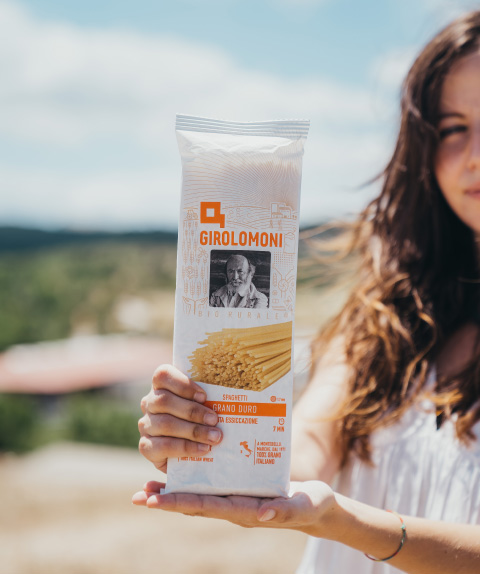
Thanks to the controlled supply chain of our organic pasta, in just 10 minutes, we can trace every pack back to the field where the wheat used to make it was grown.
Do you want to buy our products?
Discover the points of sale and direct purchase to find all Girolomoni products.
Request more information
Contact us to be able to communicate directly with each of our realities.
